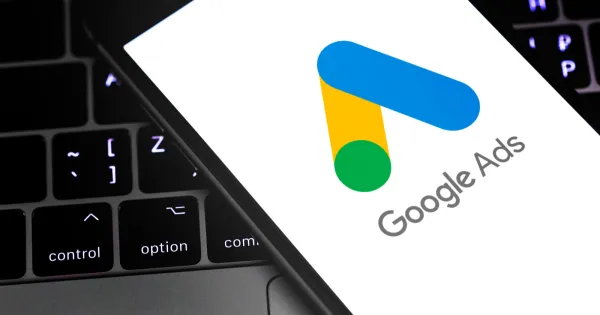How AI Detectors Work?

Introduction
With the rise of artificial intelligence in content generation, AI detectors have become essential tools for distinguishing human-written text from AI-generated content. These detectors are widely used in academia, publishing, and online platforms to maintain originality and authenticity.
But how do AI detectors work? What methods do they use to analyze and identify AI-generated content? This article breaks down the mechanisms behind AI detection, its accuracy, and its limitations.
What Are AI Detectors?
AI detectors are software tools designed to analyze text and determine whether it was written by a human or generated by an AI model like ChatGPT, Bard, or Jasper. These detectors rely on various techniques, including pattern recognition, probability analysis, and machine learning models.
Organizations use AI detectors to:
- Prevent plagiarism in academic writing.
- Verify originality in online content.
- Detect automated spam or fake reviews.
- Ensure transparency in AI-generated media.
How AI Detectors Work
AI detection tools follow a structured process to analyze text and determine its origin. Here’s a step-by-step breakdown:
1. Text Input and Preprocessing
- The detector scans and processes the submitted text.
- It removes unnecessary formatting, punctuation inconsistencies, and irrelevant details.
2. Language Pattern Analysis
- AI-generated text often follows predictable patterns, with repetitive phrases and formal structures.
- Detectors compare sentence complexity, fluency, and coherence against human writing styles.
3. Probability and Perplexity Scores
- Perplexity Score: Measures how "surprised" a language model is by a given text. A lower perplexity score suggests AI-generated content, while a higher one indicates human writing.
- Burstiness: Analyzes variation in sentence length and structure. Human writing tends to have more randomness, while AI-generated text follows a uniform style.
4. Machine Learning Models and Training Data
- AI detectors are trained using large datasets of both human and AI-generated content.
- They use deep learning to recognize subtle differences in text structures.
5. Output and Probability Score
- The detector provides a probability score indicating how likely the text is AI-generated.
- Some tools highlight specific sentences or words that appear AI-generated.
Accuracy of AI Detectors
AI detectors are improving, but they are not perfect. Their accuracy depends on several factors:
1. AI Model Advancements
- New AI models generate more human-like text, making detection harder.
- AI content is becoming more fluent, reducing detection reliability.
2. Length of the Text Sample
- Longer text samples allow for more accurate predictions.
- Short passages can be misclassified due to limited data points.
3. Training Data Bias
- Detectors are trained on existing datasets, which may introduce bias.
- If the dataset lacks diverse writing styles, results may be inaccurate.
4. False Positives and False Negatives
- False positives: Human-written content is flagged as AI-generated.
- False negatives: AI-generated content is mistaken for human writing.
Many AI detectors struggle with creative writing, informal language, and texts with mixed AI and human input.
Popular AI Detectors
Several AI detection tools are available, each with different accuracy levels:
1. Turnitin AI Detection
- Used in academia to detect AI-generated essays.
- Claims high accuracy but sometimes flags human writing as AI-generated.
2. GPTZero
- Developed to identify AI-generated content, especially from ChatGPT.
- Uses burstiness and perplexity analysis.
3. OpenAI AI Classifier
- OpenAI’s official detection tool for GPT-generated content.
- Discontinued due to low accuracy but paved the way for better detection models.
4. Copyleaks AI Detector
- Provides percentage-based detection results.
- Frequently updated to adapt to newer AI models.
Limitations of AI Detectors
Despite their usefulness, AI detectors face several challenges:
1. Struggles with Hybrid Content
- AI-assisted writing (human-edited AI content) can bypass detection.
- Detectors may flag text written with AI suggestions as AI-generated.
2. False Accusations in Education
- Some students have been wrongly accused of using AI when their writing style matches AI patterns.
- AI detectors should be used alongside human evaluation.
3. Evasion Techniques
- Writers can modify AI-generated text to make it seem human-written.
- Paraphrasing tools and minor edits reduce detection accuracy.
The Future of AI Detection
As AI models improve, AI detectors must also evolve. Future advancements may include:
- Stronger deep learning models to identify AI-generated text more accurately.
- Integration with writing tools to detect AI assistance in real-time.
- Cross-platform detection for AI-generated images, videos, and audio.
While AI detection is not foolproof, it remains a crucial tool for maintaining transparency in digital content creation.
Conclusion
AI detectors play a vital role in identifying AI-generated content using language pattern analysis, perplexity scores, and machine learning. While they provide valuable insights, they are not always 100% accurate, facing challenges like false positives, hybrid content, and AI advancements.
As AI-generated content becomes more sophisticated, detection tools will need to improve continuously. However, human judgment will always be essential to ensure fairness and accuracy in content evaluation.




